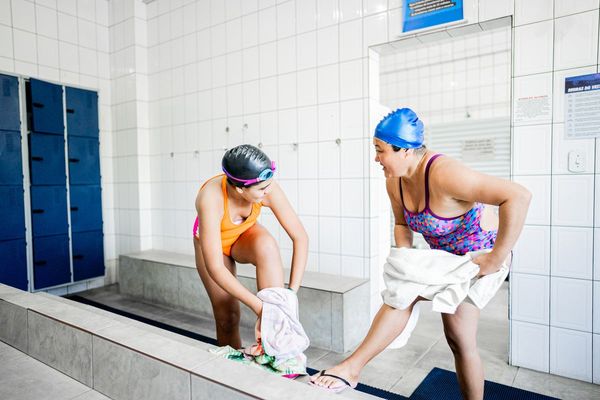
Two almost lifesize sculptures of a man and woman, who was believed to have been a priestess, have been found during the excavations of a huge tomb in the ancient Roman city of Pompeii.
The detailed funerary relics adorned the tomb containing several burial niches built into a wide wall in the necropolis of Porta Sarno, one of the main entrance gates into the ancient city. Pompeii was destroyed by the eruption of Mount Vesuvius in AD79.
Experts believe the female sculpture was of an important local woman who was perhaps a priestess of Ceres, who in ancient Roman religion was a goddess of agriculture, fertility and motherly relationships, because of the jewellery and accessories, including earrings, rings and bracelets, carved into it – especially the lunula, a crescent moon pendant hanging in the middle of the necklace.
The woman is veiled and dressed in a large cloak over a tunic, while the man is wearing a toga wrapped over his left shoulder.
However, experts are not convinced that the figures, which were joined together and are believed to date back to the late Roman Republic period, represented a married couple.
Gabriel Zuchtriegel, the director of Pompeii archaeological park, said: “Because she really looks like a very important woman in the local elite, there is also this idea that she could have been a priestess of Ceres, holding these plants and what appears to be a papyrus roll.”
She is holding what appears to be laurel leaves, which were used to purify and bless religious spaces by dispersing incense and the smoke from aromatic herbs.
With most women in Roman society relegated to domestic roles, being a priestess, an important position in public life, was the highest position a woman could aspire to and gave power on a similar level to a male priest.
Zuchtriegel said such funerary sculptures did not always represent couples. “Sometimes you get two men, or sometimes they come in threes,” he said. “This could be her husband, but it could also be her son. There was no inscription, so we don’t know.”
By the feet of the male statue is the preserved root of an ancient tree that grew on top of the tomb. “It was quite a surprise to find it there a few centimetres beneath the ground,” said Zuchtriegel.
The two sculptures are being restored and will be displayed at an exhibition in Pompeii, beginning on 16 April.
The excavations at the Porta Sarno necropolis are a joint project between Pompeii archaeological park and the European University of Valencia. In 2021, the partly mummified remains, including hair and bones, of a former slave who rose through the social ranks, were found.







